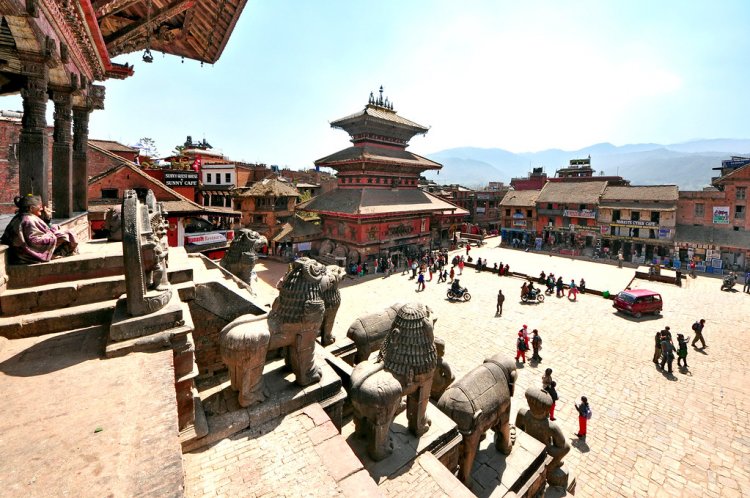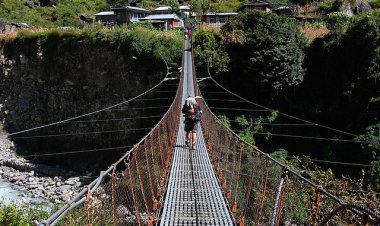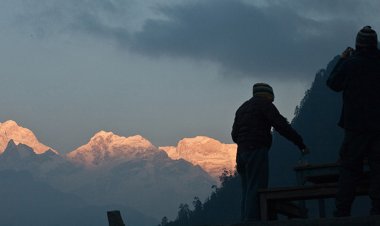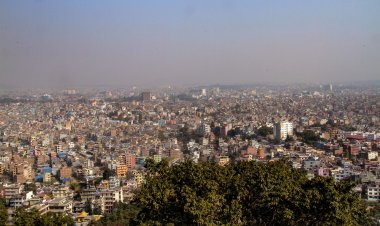Bhaktapur Durbar Square: A Journey Through Time and Culture in Nepal
Discover the rich history and culture of Bhaktapur Durbar Square, a UNESCO World Heritage Site in Nepal. Explore its stunning architecture, ancient temples, and traditional Newari culture.

Nepal is a country with a rich history and culture, and one of the most significant cultural and historical sites in Nepal is the Bhaktapur Durbar Square. Located in the heart of Bhaktapur, the third-largest city in the Kathmandu Valley, this square is a UNESCO World Heritage Site that attracts visitors from all over the world. In this article, we will take a journey through time and culture in Nepal as we explore the history, architecture, and cultural significance of the Bhaktapur Durbar Square.
The History of Bhaktapur Durbar Square
The Bhaktapur Durbar Square is believed to have been built during the 12th century, during the reign of the Malla dynasty, which lasted from the 12th to the 18th centuries. The square was the royal palace of the Malla kings and was the center of their power. The square is also believed to have been the site of many important religious and cultural events.
In 1934, a massive earthquake destroyed many of the buildings in the square, including the royal palace. However, many of the buildings were restored in the years that followed, and today, the Bhaktapur Durbar Square remains one of the most important historical and cultural sites in Nepal.
The Architecture of Bhaktapur Durbar Square
One of the most striking features of the Bhaktapur Durbar Square is the architecture. The buildings in the square are characterized by their intricate woodcarvings and the use of red bricks. The buildings are a blend of Hindu and Buddhist styles, reflecting the religious diversity of Nepal.
The 55 Window Palace, for example, is one of the most impressive buildings in the square. It is known for its fifty-five beautifully engraved windows, which are said to represent the Hindu god, Vishnu. The palace also features great wall paintings of the Malla era, along with some of the most immeasurable wood carvings of Bhaktapur Durbar Square.
The Taleju Temple, on the other hand, is a holy shrine of Bhaktapur that is considered the holiest shrine of Bhaktapur. The temple is located in Mulchowk, the most sacred place of the palace, where non-Hindus are not allowed to enter. Even for the locals, there are strict rules to follow when entering the temple, such as taking off shoes, prohibiting photography, not wearing leather, and leaving all belongings like bags right in front of the door.
Cultural Significance of Bhaktapur Durbar Square
The Bhaktapur Durbar Square is important not only for its historical and architectural significance but also for its cultural significance. The square is a hub of Nepalese culture and is home to many festivals and cultural events throughout the year.
One of the most significant cultural events held in the square is the Bisket Jatra festival, which takes place during the Nepali New Year. The festival is celebrated with great enthusiasm and involves the pulling of chariots, dancing, and feasting.
Another cultural event that takes place in the Bhaktapur Durbar Square is the Gai Jatra festival, which is celebrated in honor of those who have passed away. The festival is known for its processions of cows, which are believed to help the deceased in their journey to the afterlife.
Apart from these festivals, the Bhaktapur Durbar Square is also home to many traditional Newari restaurants that serve authentic Nepalese food. Visitors can sample traditional dishes such as momos, chow mein, and dal bhat, among others.
Preservation and Restoration Efforts
Like many historic sites in Nepal, Bhaktapur Durbar Square has faced significant damage and destruction over the years, particularly during the devastating earthquakes of 2015. However, the Nepalese government, in collaboration with international organizations, has made significant efforts to preserve and restore the square's historic buildings and structures. The restoration work has focused on using traditional building techniques and materials, such as mud, brick, and wood, to ensure that the structures remain true to their original designs.
In addition to the restoration work, the government has also implemented strict regulations and guidelines for the maintenance and preservation of the square. Visitors are required to follow certain rules, such as not wearing shoes inside the temples and not taking photographs of the living goddess or other deities.
Conclusion
Bhaktapur Durbar Square is a treasure trove of history, culture, and architecture. The square is a must-visit destination for anyone interested in exploring the rich cultural heritage of Nepal. The square's temples, palaces, and courtyards offer a glimpse into the country's past and the Newari people's unique architectural and artistic style. Despite the challenges it has faced, the square remains a symbol of Nepal's resilience and determination to preserve its cultural heritage for future generations to enjoy.
Frequently Asked Questions (FAQ):
-
What is the historical significance of Bhaktapur Durbar Square in the context of the Malla Kingdoms?
Bhaktapur Durbar Square served as the royal palace for the Malla Kings and was a political, cultural, and religious center during their rule. -
How long does it take to explore Bhaktapur Durbar Square thoroughly?
The time required to explore Bhaktapur Durbar Square depends on individual preferences, but on average, visitors may spend 2 to 4 hours exploring the various temples, palaces, and courtyards. -
What measures are in place for the preservation and conservation of the historical structures in Bhaktapur Durbar Square?
Authorities often implement conservation measures to protect the historical structures, including ongoing restoration projects and guidelines for sustainable tourism practices. -
Are there any local legends or myths associated with the architecture of Bhaktapur Durbar Square?
Local folklore often surrounds the architecture of Bhaktapur Durbar Square. Some structures are believed to have mythological significance, and legends may be associated with their construction. -
How has Bhaktapur Durbar Square contributed to the preservation of traditional Newari art forms?
Bhaktapur Durbar Square plays a crucial role in preserving traditional Newari art through its architecture, festivals, and the presence of artisans and craftsmen practicing their traditional skills. -
What are some traditional crafts and souvenirs available for purchase in Bhaktapur?
Bhaktapur is known for its traditional crafts. You can find shops and markets around the square selling pottery, thangka paintings, wood carvings, and other local handicrafts. -
How has Bhaktapur Durbar Square evolved over the centuries in terms of architectural styles and influences?
The square reflects a blend of Hindu and Buddhist architectural styles. Changes in ruling dynasties and cultural influences have contributed to the evolution of its architectural landscape. -
Can visitors participate in any cultural workshops or activities in Bhaktapur Durbar Square?
Some initiatives offer cultural workshops where visitors can engage in activities such as pottery making, traditional painting, or learning traditional dance forms. -
What role does Bhaktapur Durbar Square play in local community life today?
Besides its historical significance, Bhaktapur Durbar Square remains a focal point for local events, gatherings, and festivals, contributing to the social and cultural life of the community. -
Are there any evening events or festivals that take place in Bhaktapur Durbar Square?
Some festivals and events may extend into the evening, featuring cultural performances, traditional music, and illuminated displays. It's advisable to check the local calendar for specific events.
What's Your Reaction?





































































































